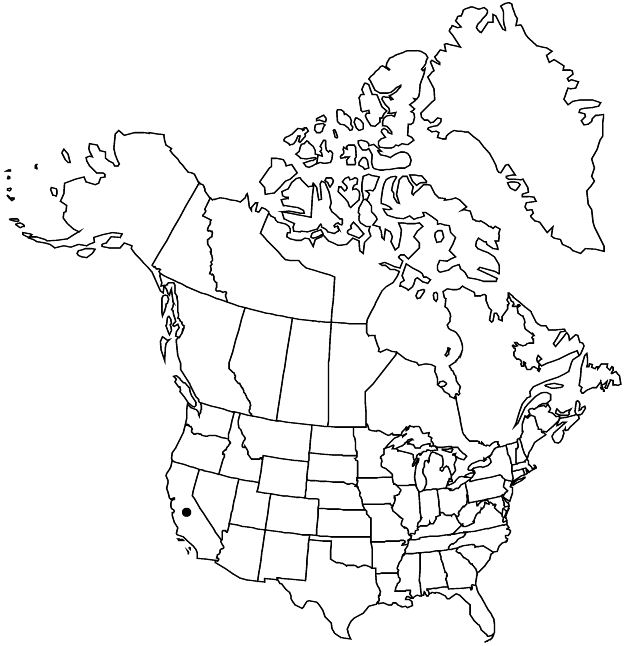Horkelia marinensis
Lloydia 1: 91. 1939.
Plants matted, green to grayish. Stems ± decumbent to ascending, 1–3.5(–4.5) dm, hairs spreading to ascending. Basal leaves ± planar to nearly cylindric, 4–12(–15) × 1–2.5(–3) cm; stipules entire or basally lobed; leaflets 5–10(–12) per side, ± overlapping especially distally, cuneate, 7–12 × 5–10 mm, nearly as wide as long, divided 1/3–1/2 to midrib into (3–)5–10 acute to obtuse teeth, villous. Cauline leaves 3–5. Inflorescences usually congested, flowers usually arranged in dense corymbiform clusters. Pedicels 1–6 mm. Flowers 10–15 mm diam.; epicalyx bractlets lanceolate, 2.5–4.5 × 1 mm, ± 2/3 length of sepals, entire; hypanthium 1.2–1.5 × 4–5 mm, less than 1/2 as deep as wide, interior pilose; sepals ± reflexed, lanceolate, 3–6 mm; petals narrowly oblanceolate to narrowly oblong, 4–7 × 2 mm, apex obtuse to rounded, rarely truncate; filaments 1–2.8 × 0.2–0.6 mm, anthers 0.6–0.9 mm; carpels 20–30; styles 2–4 mm. Achenes brown, 1.5–2 mm, smooth to slightly rugose. 2n = 56.
Phenology: Flowering summer.
Habitat: Sandy coastal flats, stabilized dunes
Elevation: 0–800 m
Discussion
Of conservation concern.
Horkelia marinensis occurs in three population clusters along the coast of California: near Fort Bragg and Rockport in Mendocino County, on Point Reyes Peninsula in Marin County, and from Santa Cruz and (historically) San Mateo counties. The last population cluster has often been confused with H. cuneata var. sericea; plants of it have more deeply and apically toothed, cuneate leaflets and longer, silkier hairs. It is also the basis for the attribution by J. H. Thomas (1961) of H. rydbergii (as H. bolanderi subsp. parryi) to the Santa Cruz Mountains. The three population clusters differ somewhat in vestiture, evident glandularity, and leaflet shape and size; further studies may indicate that varietal status is justified. References to H. marinensis in Sonoma County (M. G. Barbour 1970) are based on specimens of Acaena pinnatifida var. californica; reports from southern Mendocino County (G. L. Smith and C. R. Wheeler 1990–1991) are based on misidentifications of H. californica and H. tenuiloba.
Horkelia marinensis is by far the most aromatic member of the genus; the odor, which has been compared to that of a beehive, often can be perceived even before the plants are located, especially on sunny days. Plants do relatively well in cultivation, forming spreading mats with flowers that are strongly attractive to both native bees and honeybees.
Selected References
None.
